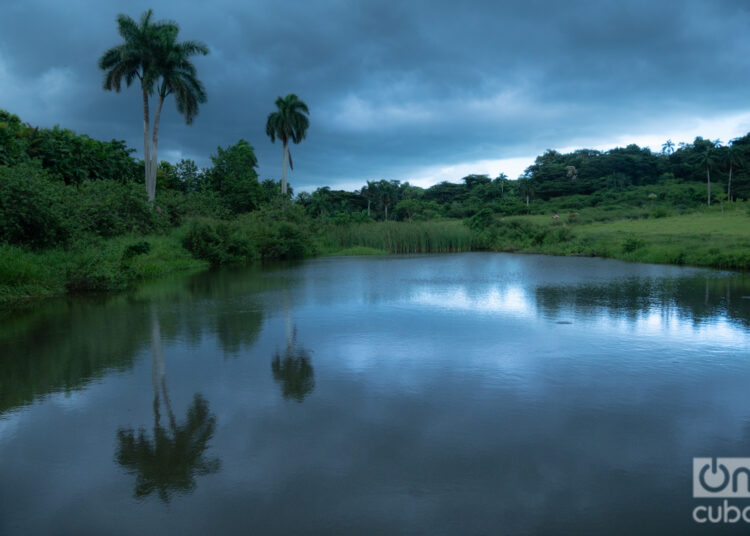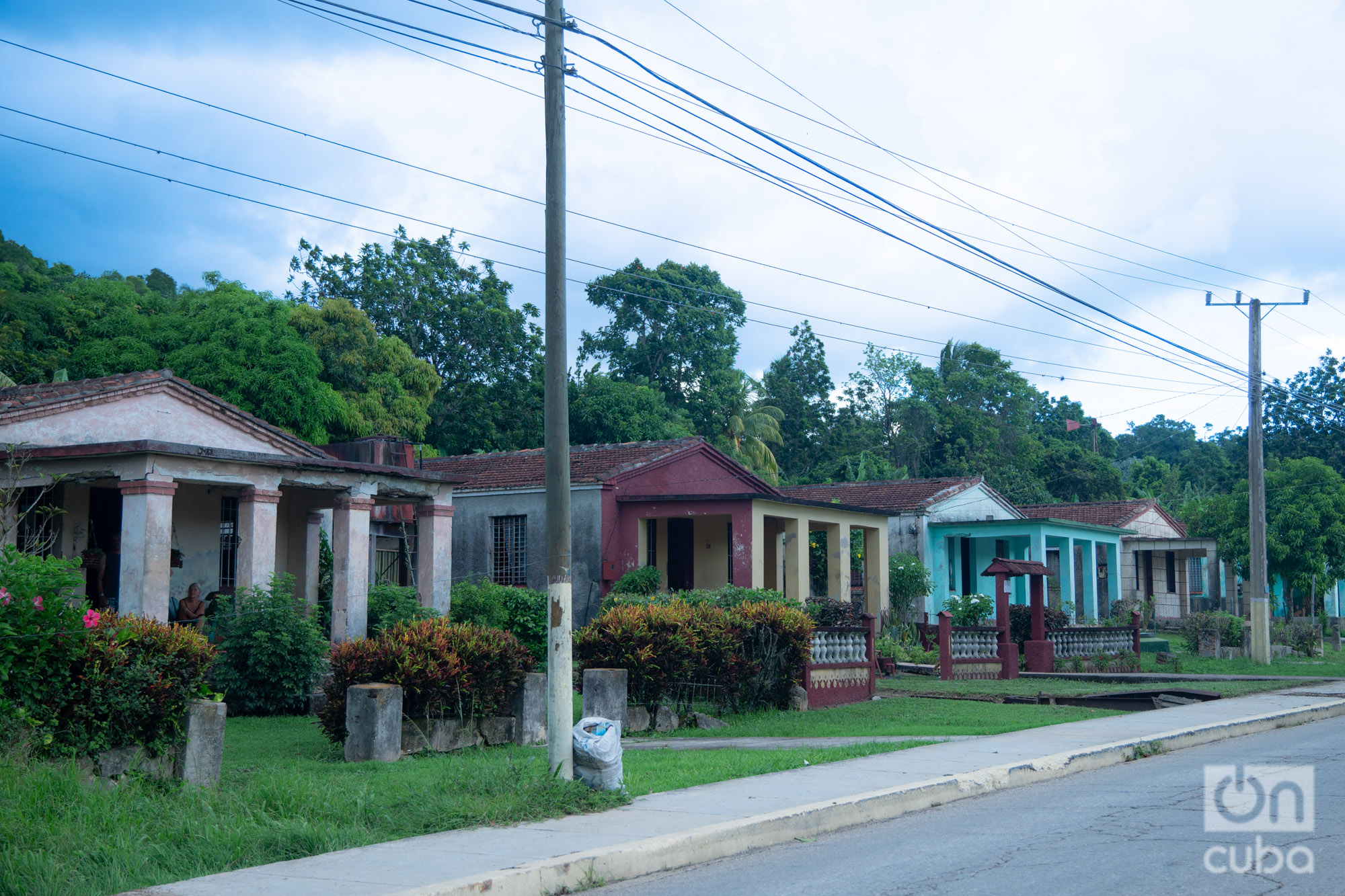We arrived in San Miguel de los Baños thanks to the Basques’ Pregabalin pills. Or, better said, thanks to my mother having such a bad stomach ache that she ended up hospitalized for two weeks. Sharing a hospital room sometimes brings people together forever. There my mother met Maricusa and her daughter Liz Maray, who was accompanying her The two sick old women had a great time telling each other stories about their lives. Thanks to the dedicated care of the doctors and their inspiring conversations, they came out alive.
Months later, some Basque friends left us a bag with strange pills that we gave to several people. We only had one left that we didn’t even know what it was used for. My mother began to think about who was taking Pregabalin and remembered that Maricusa needed it for her illness. And since we had planned to go on vacation to Matanzas, we decided to take a short hop to the town where she lives, which we had never heard of.
When we left the La Catedral stop on a moped-drawn cart to the Matanzas terminal, we didn’t suspect that we would find such a unique place and family. My two children, aged 4 and 13, my husband and I with a backpack each, plus two overnight bags, were packed on that moped like sardines in a can. We were talking about the seven kilometers we had to walk from Coliseo to San Miguel when a lady who was sitting in front of us told us that she was from there. Nuria immediately realized that we were going to Maricusa’s house and offered to guide us. We arrived at the terminal and with her help we got on a jeep that was going to Colón. On the way to Coliseo, where we had to get off, she told us that just the night before she had been at Maricusa’s house and she had told her that she was waiting for some friends from Havana. It was us. “What a coincidence! That’s so that you can see that God is always good.”
Nuria also told us that San Miguel “is different.” And we believed her immediately because in that sentence there seemed to be more firmness than when she spoke of the absolute goodness of the Lord. We knew that the place had many attractive features: miraculous waters, a hill with a Christ, beautiful houses, and a children’s park. The driver, who was listening to the conversation, recognized Nuria from other trips and asked her, dying of laughter: “Aren’t you an artisan? The one with the pigs that sleep with a fan?” That was her.
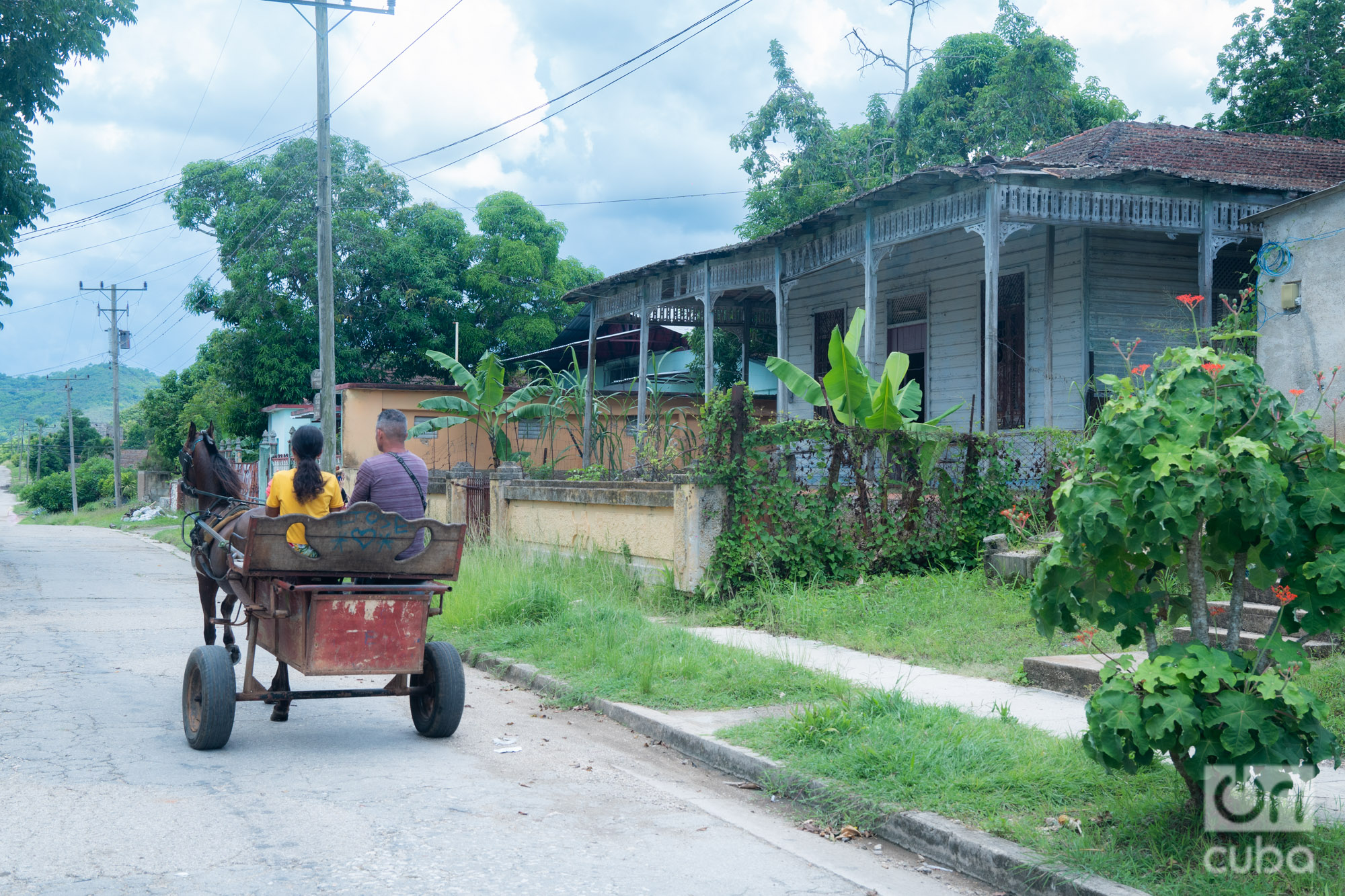
Thanks to the good memory of the driver, we learned three important things. The first is that there are many artisans in San Miguel. Liz Maray would later explain to us that the strongest economic support there was gastronomy, but people moved to crafts when the town deteriorated and stopped being a tourist destination. The second is that people no longer raise animals as they used to because feed, soy, and corn are very expensive. There aren’t even leftovers with the little that people have to eat. It doesn’t make money. We would confirm this when Maricusa’s son apologized to us for receiving us with croquettes and not with a freshly killed pig, as in the good times. The other thing we learned, firsthand, was that in San Miguel there are constant outages. A week after traveling through Coliseo, Jovellanos, Perico, and Indio Hatuey we would learn that power is a shared dilemma for those places. While cooking with charcoal in Hormiguero, 44 kilometers from San Miguel, I would imagine the heat that Nuria’s pigs must have been suffering with those blackouts.
We got off the jeep at the indicated place and our guide got a car that took us directly to Maricusa’s house. There her daughter Liz Maray, an internationally recognized artisan, was waiting for us to give us a tour of her hometown.
The streets of San Miguel are beautiful. Wooden houses of various architectural styles; it seems like we are walking through another time. Some are perfectly preserved and their gardens are full of flowers. Others, due to their level of deterioration, reveal the present of a forgotten town. I wanted to go inside one of these houses to see what they look like inside. What would an ordinary family look like, watching a Cuban soap opera on an old Atec-Panda inside a house that belonged to one of the wealthiest families in Cuba?
As we walk under the sun, Liz Maray tells us that some houses were for rent and many others were for recreation. At certain times of the year, the owners came to enjoy them. When the Revolution triumphed, many went to the United States with the idea of returning in a few months. So the servants kept some and others were “assigned” by the government to different people or institutions.
As we walk through the town, you notice that there are several types of old houses. The wooden mansions, which look like something out of a fantasy movie, and other smaller ones, equally beautiful. We passed by a group of houses on 12th Street called Blancanieves y los siete enanitos (Snow White and the seven dwarves). The picturesque name comes from the fact that there are seven identical wooden houses and a concrete building that looks down on them, like a princess.
Each dwarf has a different state of preservation, the differences between them reflect the differences between the town’s inhabitants. The most economically well-off work as craftspeople and have stands in Varadero. Others are farmers. There are carpenters, blacksmiths, shoemakers, and mamoncillo sellers. Others sell trinkets and basic need products in doorways and kiosks, as we see in Havana or any Cuban province. The neediest are those who have state jobs in the town’s institutions. But, as in all places, people make a living.
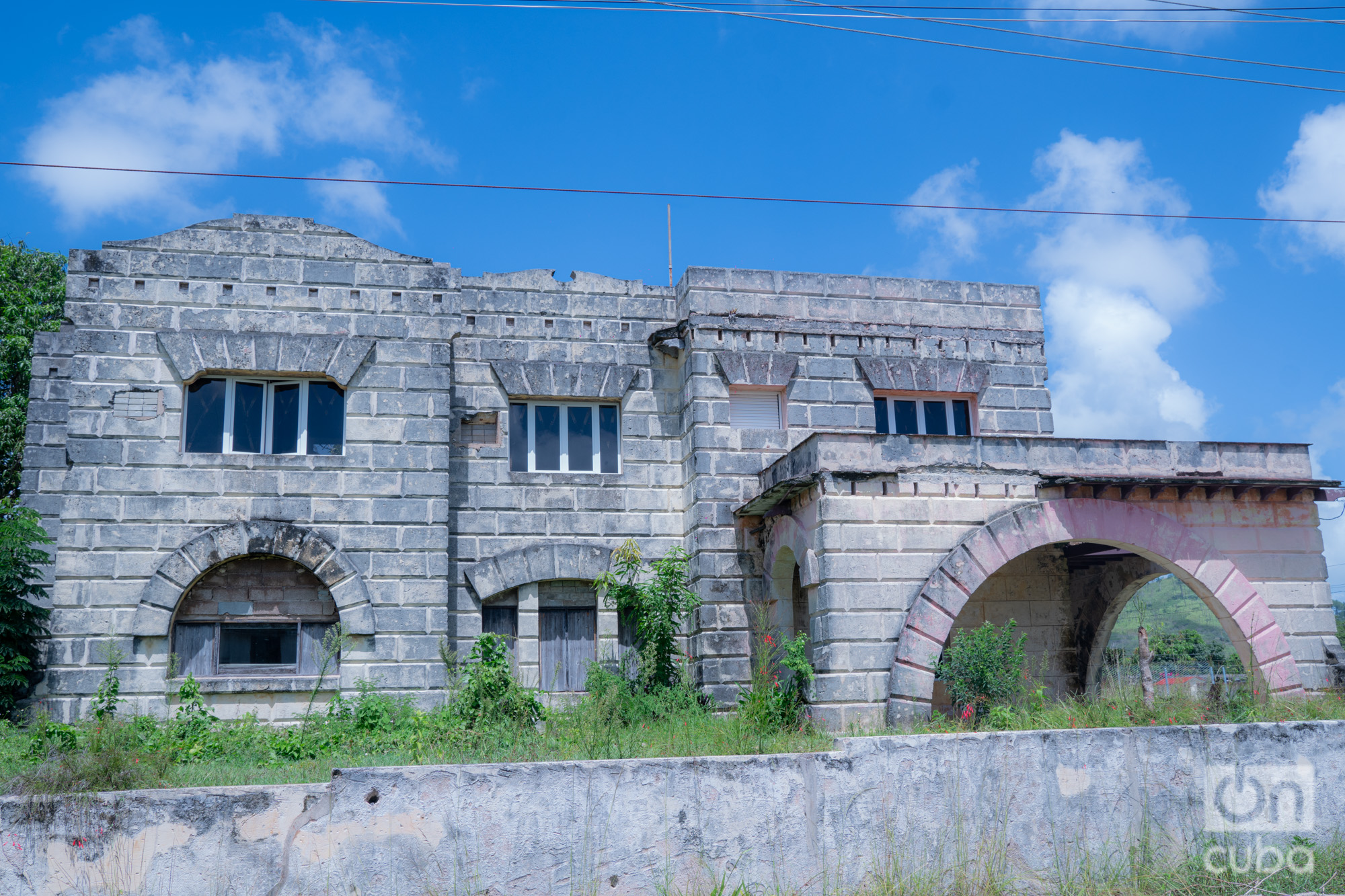
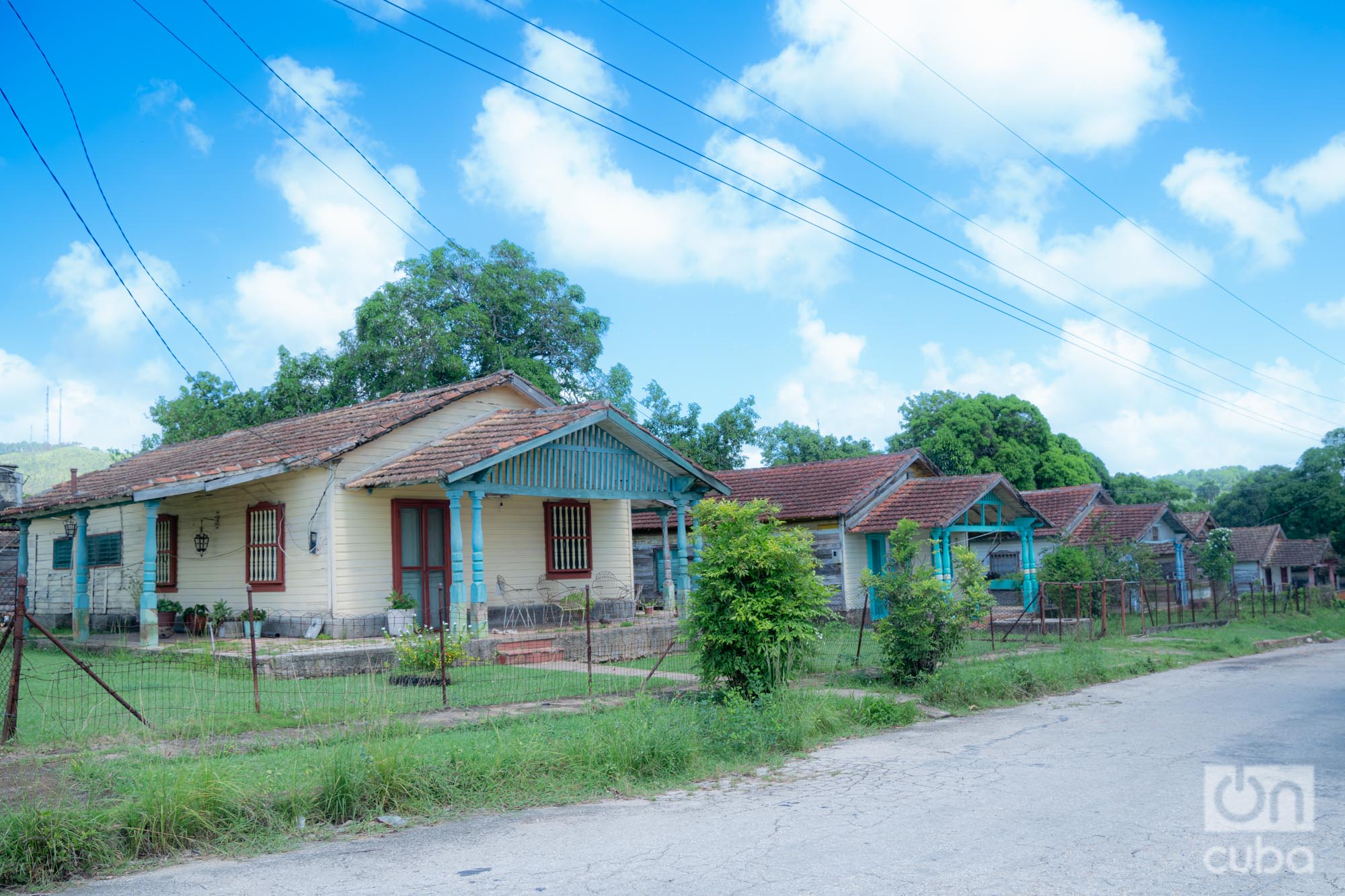
We passed by the sites where the Villaverde Hotel used to be — founded in 1925 and of which nothing remains — and the Cuba Hotel — which opened in 1926 and is today almost destroyed, and what remains is used for housing. We looked at the San Miguel Hotel, the only one still standing. It was built in 1910 and restored in 1930. Today the upper part is in disuse, due to deterioration, and on the ground floor is the SAF, where they make food for the elderly. The most splendid of the four hotels is the Gran Hotel Balneario, which we left for the end of the tour with the promise of seeing the miraculous springs that are still the town’s greatest asset.
San Miguel has a large swimming pool, in an old recreational center that survived the hotels, but is now in ruins. Below are the cabins where people stayed and from high above you can hear the water of the river, where people used to ride water bikes. In the dance space, next to the pool, there were recent construction materials; later I learned that a private individual is repairing the place. I hope that at least the pool where young people of my age managed to swim in their adolescence will be restored.
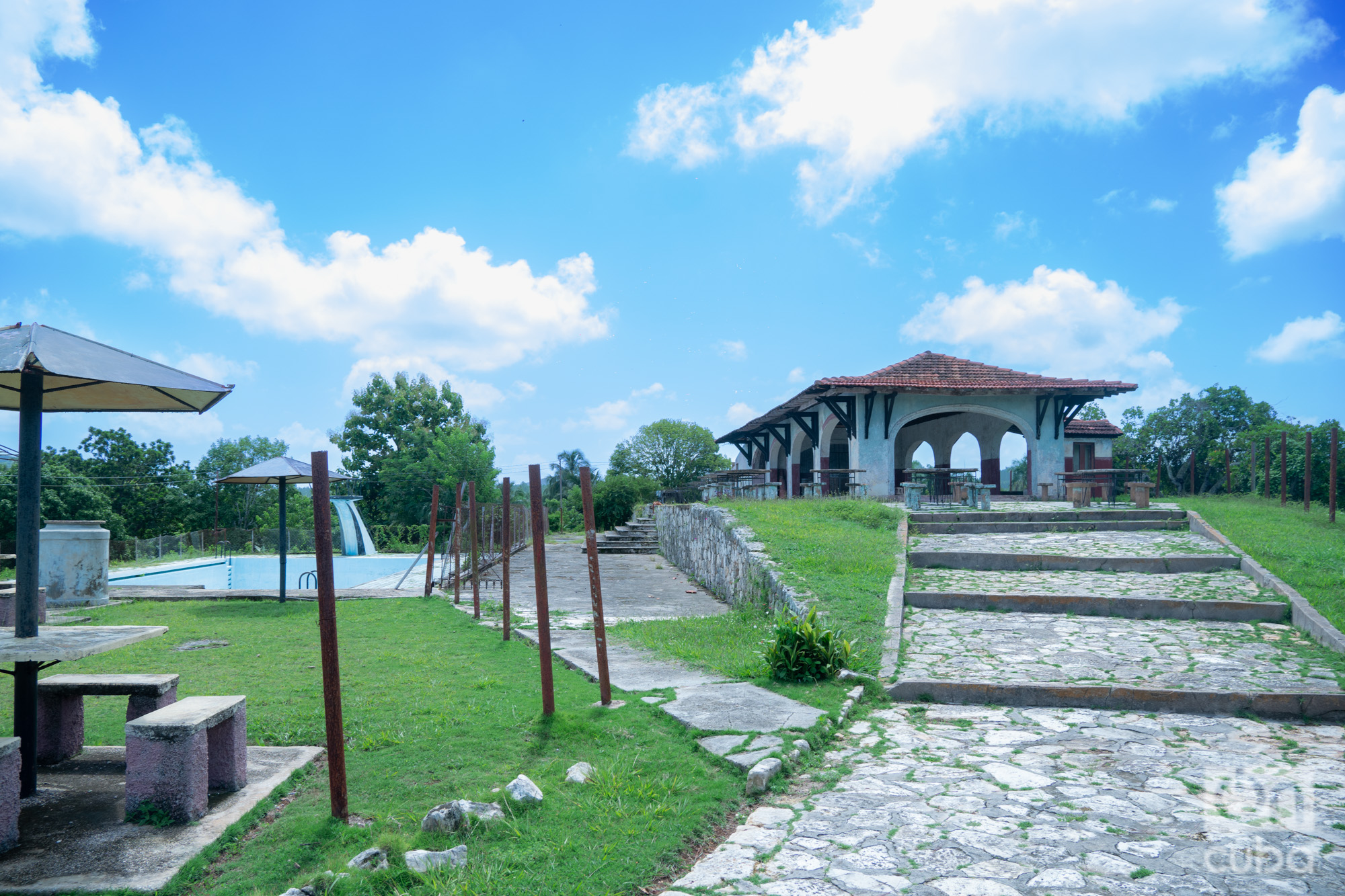
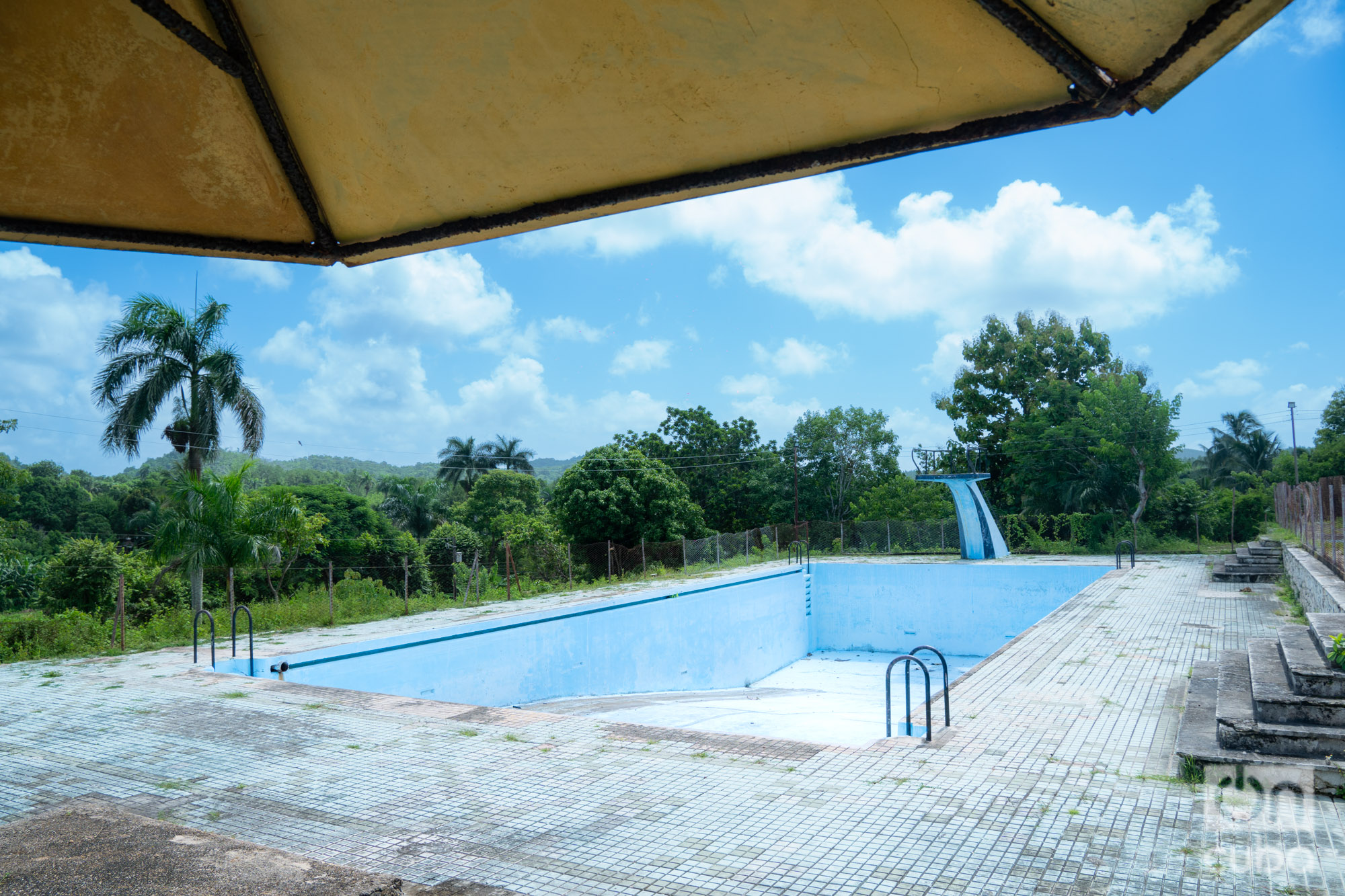
We went to Finca La Primavera, a national reference, and we were able to see another part of San Miguel de los Baños’ assets: fertile soil that produces fruits and flowers, and a culture of caring for the land and animals. We saw the pigpens that before the pandemic were full of healthy pigs and the biodigester that generated so much gas that it was enough to supply the surrounding community and the rest was stored in an immense tank. Now there are only a few pigs and goats. Some cows graze beneath the lush ornamental plants that, before COVID-19, were sold to Varadero hotels.
The children cut down guavas and we filled a backpack: the softer ones to make juice and the harder ones to eat later. We saw the three springs and the reeds that rise above the farm and look down on the other plants, like Snow White on the seven dwarves. At the largest spring, they put a small boat in and play fishing with friends while they have a few refreshments and forget how bad things are after the pandemic. At the farm of Hernán, Maricusa’s son, we were caught in the downpour that the area gets every afternoon. We were there for almost two hours until it cleared up completely. Because the people there are not afraid of the rain, but they are afraid of the lightning that can kill you in the middle of the field.
While it was clearing up, Liz Maray told us the story of Miguel, a black slave, who was hiding in a cave very close to the farm. It turns out that he got sick and was expelled from the plantations for fear that he would infect others. Miguel wandered through the mountains with sores on his skin and came across the medicinal waters that flowed from the springs. He drank from them and bathed in them for a while until he was completely cured. They say that he returned in good health and with his head held high like the runaway slaves. Then word of the miracle of the waters spread and the town was built around them and took the name of San Miguel de Los Baños. Later it would be a place for the rich with the name of a slave.
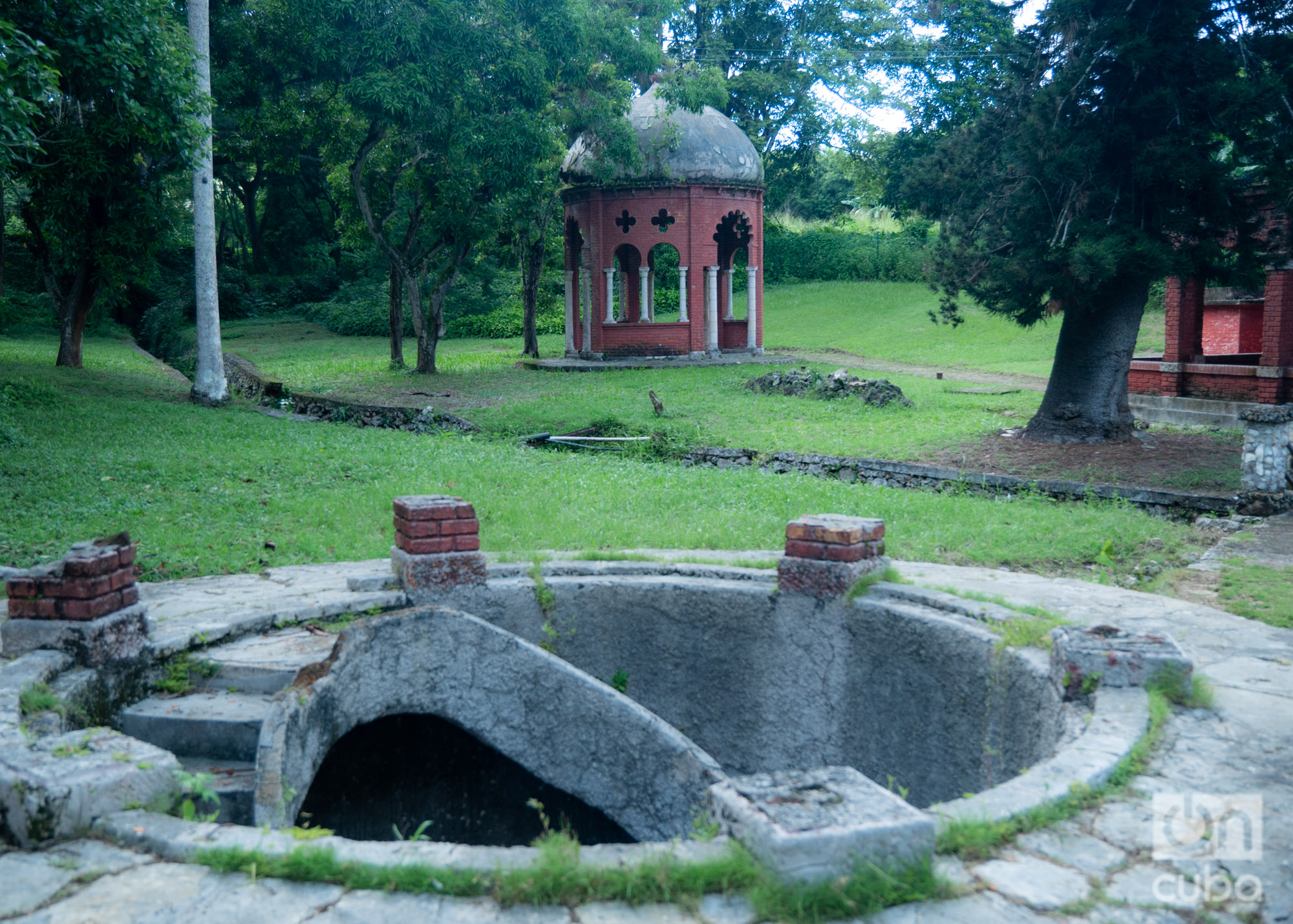
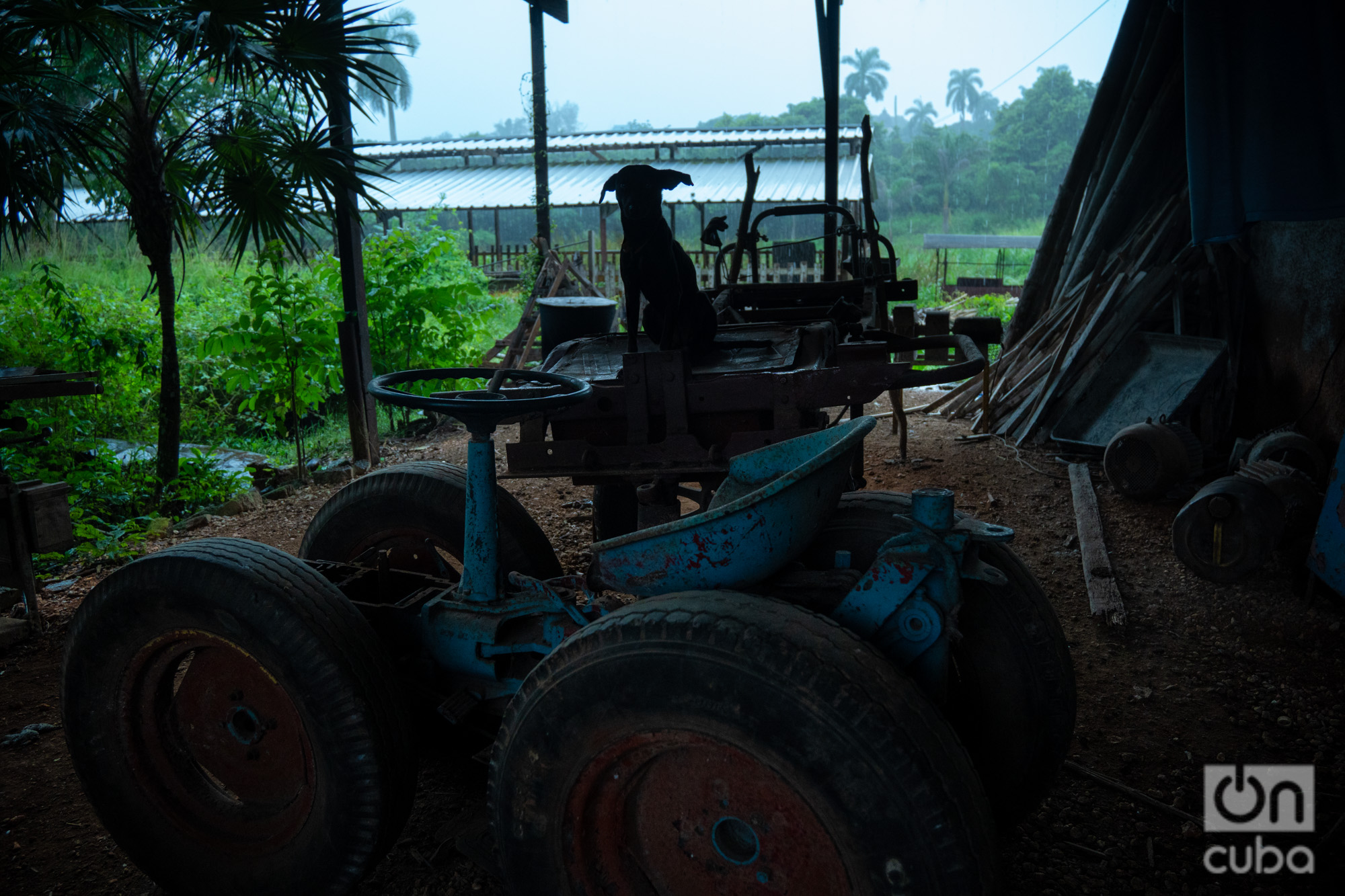
The geographic space of the town forms a semicircle on the map. Right in the center is the Gran Hotel Balneario. There, in ruins, is the greatest attraction and the greatest benefit for the inhabitants and visitors. How come we had never heard of such a place? We had been to Matanzas so many times and never heard anything about it. In 1930 the Balneario was founded, the first facility of its kind in Latin America. Doctor Manuel Abril came to the town looking for healing and found it thanks to the waters. As he was a shrewd businessman, he bought land and ordered the construction of the hotel. They say that the then-president of Cuba, Gerardo Machado, attended its opening, which was a grand affair. The neighbors say that even planes landed on the land that is now a military unit.
After years of closure, the hotel was renovated in 1979 and opened to the public, but it did not last long due to a lack of maintenance. Liz Maray, born in 1971, tells the story of the Balneario that she knew. She tells us that there was a cafeteria, a bar, and a restaurant upstairs. She tells us that there were New Year’s Eve parties in the enormous ballroom with stained glass windows. Everything was lit up like in princess movies and the girls of the town dreamed of going there to dance with the Aragón Orchestra. Then it deteriorated. People say that since it was on the border between Limonal and Jovellanos, they passed it on like a hot potato so they wouldn’t have to worry about it.
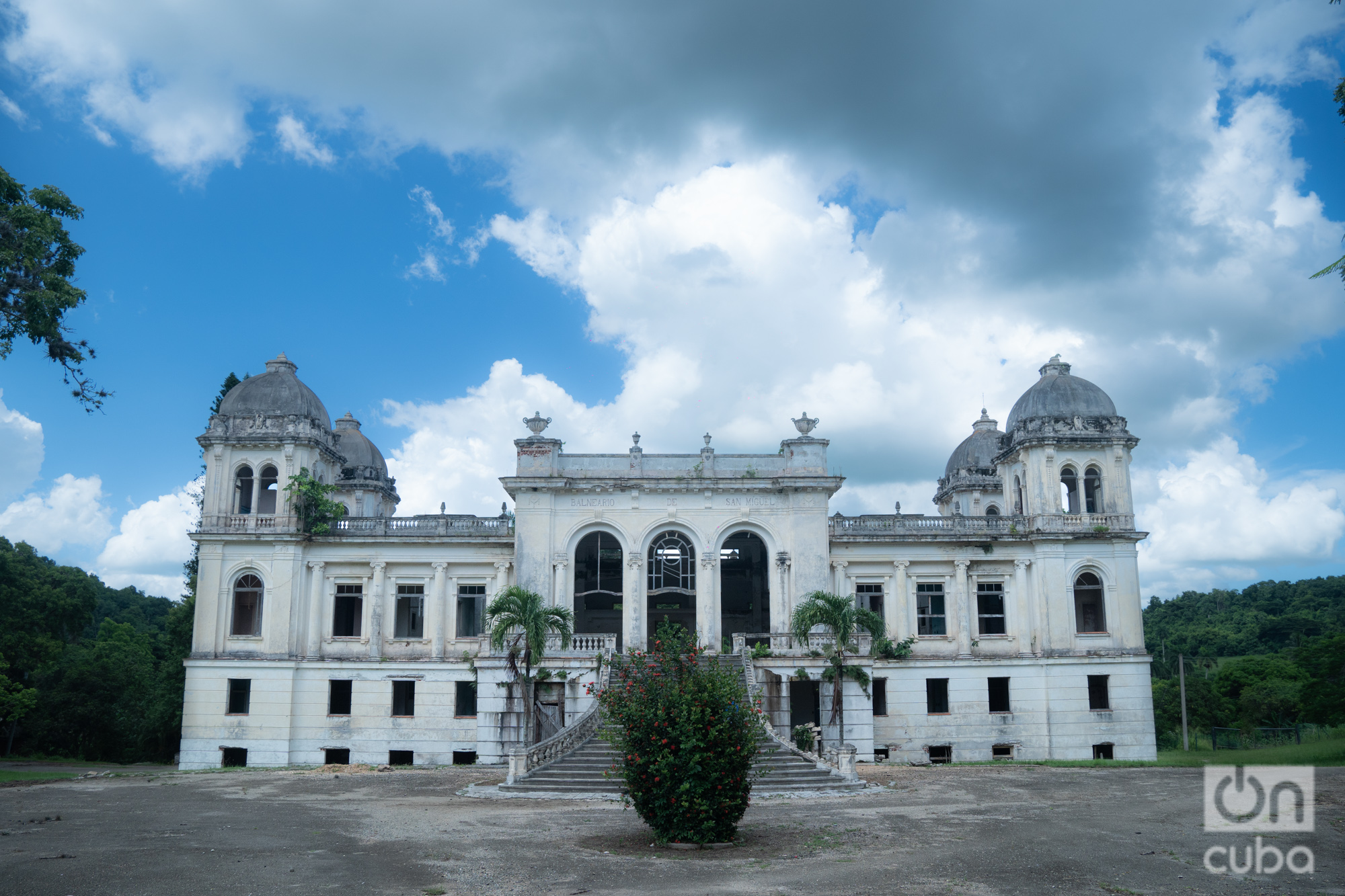
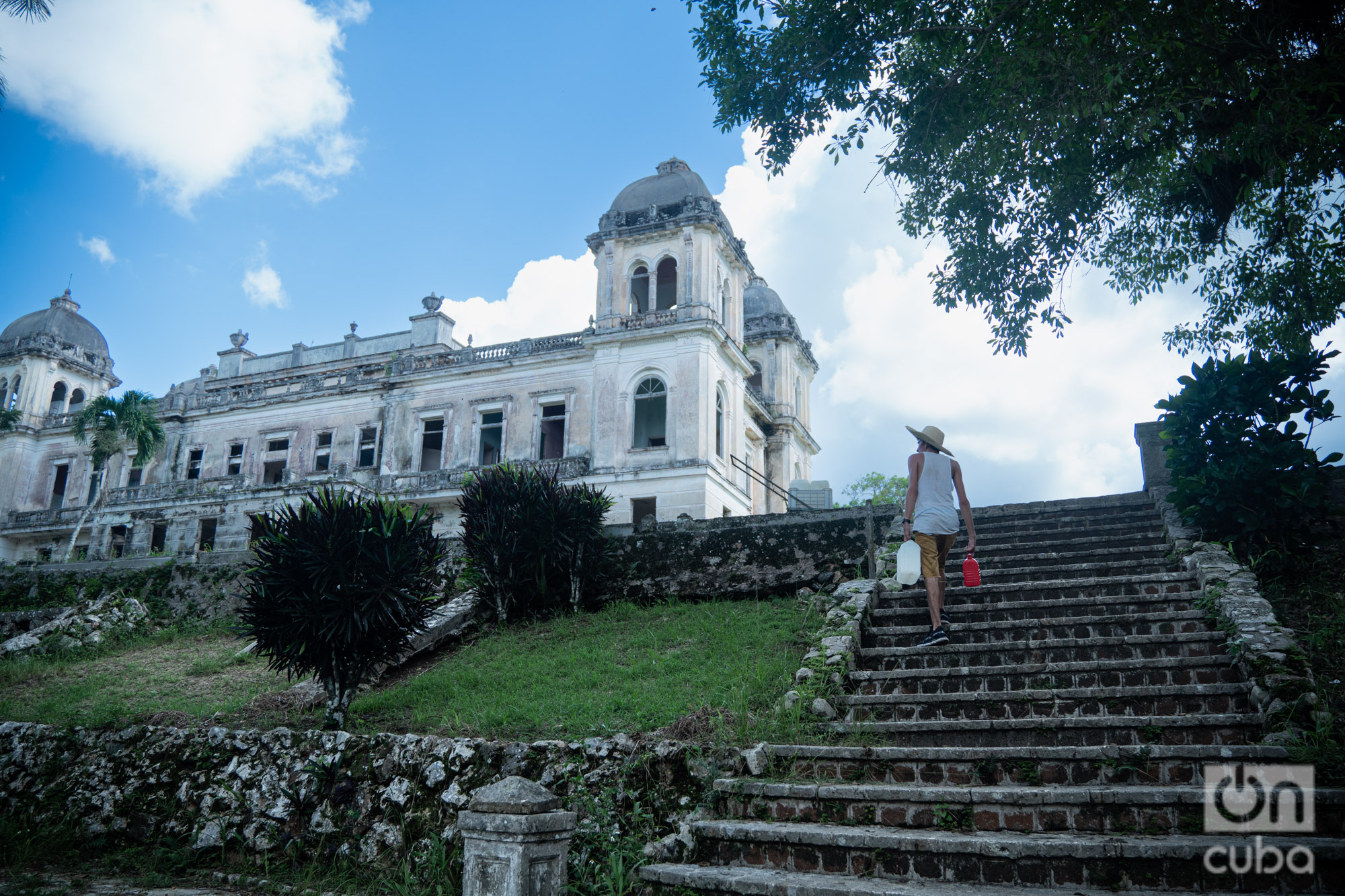
Liz Maray was telling us what used to be in the place where now there is nothingness. She started giving life to the cracked walls and, while she spoke, it seemed as if time had not passed. Before and after the triumph of the Revolution, the town lived off the Balneario and had an elite gastronomic culture. The water was heated by solar panels. When people didn’t even know what that was, they were already being used in San Miguel. As almost always happens, people don’t remember the exact moment when everything began to run down. Then vandalism destroyed what was left of the furniture, the marble, the stained-glass windows, the stairs, the tiles.
There was also a plant where water was bottled and labeled for sale. That area is also in disuse, but the townspeople continue to go to the springs every day to get water to drink. The Balneario Gardens are perfectly manicured, well-kept, and fragrant. The inhabitants cross them to carry bottles, tanks, and even buckets. Some arrive with their handmade carts to carry larger quantities. At the moment two springs continuously supply water to all who come to them. Some prefer El Tigre, while others prefer to enter the La Salud area where the water contains more sulfur.

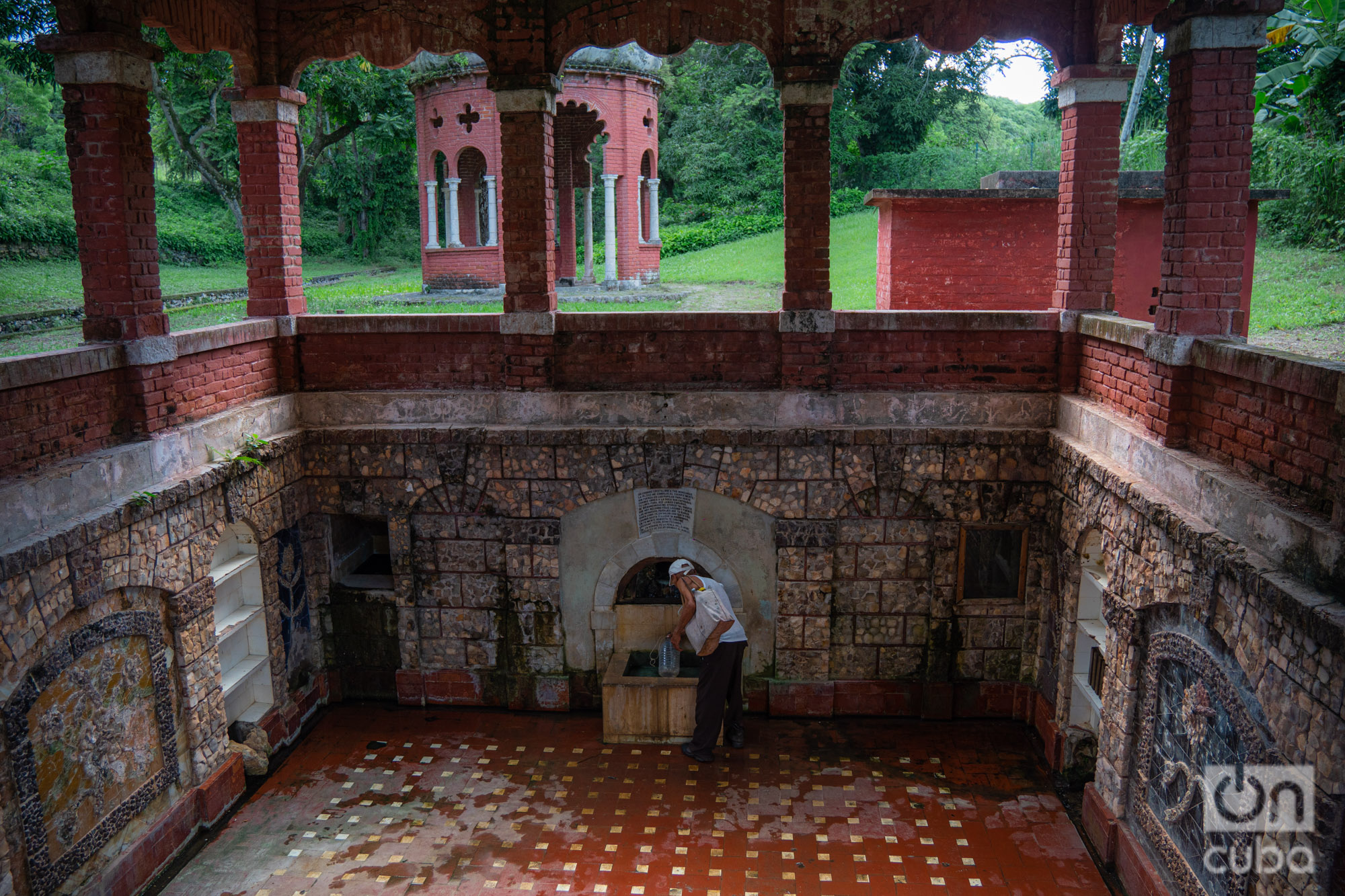
My younger son wore his swimming trunks to dive headfirst into the springs and the older one carried an empty bottle of Parranda beer to fill with magic water. Oliver realized that a spring is small and he could only put his hands in. When he tasted the water, he exclaimed with tremendous joy: “Mmm, it tastes like an egg!” Then Diego, who is in his teens, said: “Wow, how great. If they cook rice with that water, it is like eating rice with a fried egg, even if you are eating just rice.” I don’t think that the water from the springs kills hunger, but it is scientifically proven to cure digestive and urinary problems. It helps fight anemia, diabetes and is good for circulation, the liver, breathing, and the skin. In San Miguel de los Baños there is a real treasure. It was very exciting to be there with my family and for the children to learn the value of nature.
I did not see a town waiting in stillness to be rescued from ruin. I saw people working, struggling, inventing, earning a living with what they can, until luck and the will of those who decide come together to rescue what is lost. As in many other towns in Cuba, some people go hungry and suffer from outages, but they have their waters and their faith in them. Perhaps that is the greatest consolation for those who, day after day, face the majestic ruin of the Balneario to fill their containers with healing water.

That night the power did not go out in San Miguel; a miracle, they say. We slept in a bed of wood and wicker, comfortable and anxious for dawn to come so we could live a new adventure in San Miguel de los Baños, a town they called Cuba’s Paradise.
The next day we would climb Loma de Jacán accompanying Maricusa to pay a promise to the miraculous Christ of the hermitage that stands at the top.

